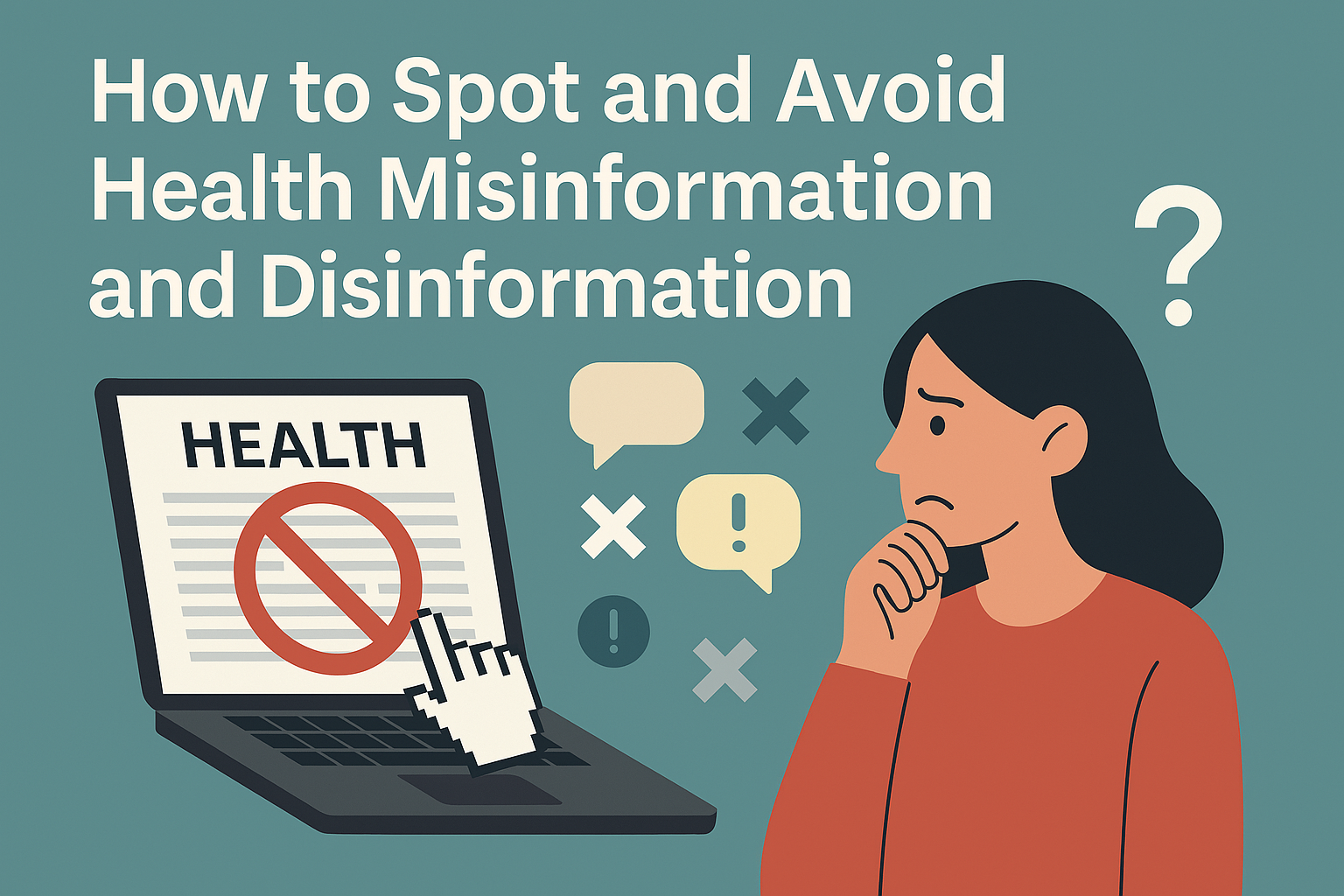Why Health Misinformation and Disinformation Are Spreading: How to Spot Inaccurate Information and Protect Your Health
In today’s digital age, viral content and rapid social media communication make it easier than ever for misinformation and disinformation to spread. This is particularly concerning when it comes to health matters. With the abundance of health-related information circulating online, it’s crucial to understand why these inaccuracies spread so widely, how to identify them, and what we can do to protect ourselves from falling victim to false health information.
The Rise of Misinformation and Disinformation in the Health Space
Thanks to the global accessibility of the internet, information on virtually any topic is just a click away. While this is generally a great advancement, it also means that we are increasingly exposed to unchecked, unreliable information—especially when it comes to health. The rapid dissemination of content, including videos, articles, and social media posts, has made it much easier for both misinformation and disinformation to go viral.
A report from the International Panel on the Information Environment (IPIE), released in 2024, highlighted concerns about the role of social media platforms in spreading misinformation. These platforms, without sufficient regulation or oversight, are prime venues for circulating inaccurate health information. The lack of strict guidelines allows misleading or even malicious content to thrive.
Understanding Misinformation and Disinformation
It’s important to distinguish between misinformation and disinformation. Misinformation refers to the spread of incorrect or inaccurate information, often without malicious intent. This could happen when someone unknowingly shares an error or misinterprets information.
On the other hand, disinformation is much more dangerous. It involves the deliberate spread of false information by individuals or groups aiming to manipulate their audience and promote a hidden agenda. This type of content is intentionally deceptive and can cause significant harm, especially when it involves health-related matters.
Why Do We Fall for False Health Information?
So why do we often fall for false health information, even when it seems blatantly incorrect? Cognitive psychology can shed some light on this issue. According to Prof. Stephan Lewandowsky, a cognitive psychologist at the University of Bristol, misinformation persists because of how our brains process and retain information. Once we form beliefs—especially about something as personal as our health—it can be challenging to change them, even when presented with evidence to the contrary.
Additionally, humans are more likely to trust information that aligns with their pre-existing beliefs. This cognitive bias makes it easier for health misinformation to take hold and spread, especially if it confirms something we already want to believe.
How to Spot Misinformation and Disinformation
The ability to recognize unreliable health information is essential for protecting your well-being. Here are some key strategies for identifying misinformation and disinformation:
-
Check the Source: Always verify where the information is coming from. Reputable health organizations like the World Health Organization (WHO), Centers for Disease Control and Prevention (CDC), and well-known medical institutions are reliable sources.
-
Look for Evidence: Trust information that is backed by scientific research and clinical studies. If the article or post lacks credible sources or references, it’s a red flag.
-
Beware of Sensational Headlines: If the claim seems too good (or too dramatic) to be true, it probably is. Be cautious of clickbait headlines that promise miraculous cures or quick fixes for health problems.
-
Cross-check Information: Confirm the facts with multiple credible sources. A quick search of reputable health websites can help validate the information.
-
Consider the Intent: Consider the motive behind the information. If the content is selling a product or pushing a particular agenda, be skeptical.
How to Update Mistaken Beliefs
If you’ve already encountered misleading health information, it’s crucial to update your beliefs to reflect the most accurate, evidence-based understanding. This can be a challenge, especially if the misinformation has been ingrained in your thinking for a long time. However, Dr. Jenny Yu, Chief Health Officer at RVO Health, advises that the first step is to actively seek out trustworthy health sources and be open to changing your perspective.
It can also help to engage with professionals who can provide evidence-based advice and clarify misconceptions. If you hear conflicting health advice, don’t hesitate to ask a healthcare provider or consult trusted online health platforms.
The Role of Social Media in Health Misinformation
Social media is both a blessing and a curse when it comes to health information. On one hand, it allows people to easily share valuable knowledge and personal experiences. On the other hand, its unregulated nature makes it a breeding ground for misinformation. Platforms like Facebook, Instagram, and Twitter are often used to spread both misinformation and disinformation quickly.
While social media companies are increasingly taking steps to flag and reduce the spread of false content, the sheer volume of information makes it difficult to monitor effectively. Therefore, users must be critical of the content they encounter online.
What We Can Do to Protect Ourselves
To protect ourselves from falling for false health information, we need to educate ourselves on how to recognize it. Trusted health organizations, fact-checking websites, and professional advice should always be prioritized. Dr. Jenny Yu recommends staying informed by using established medical platforms, reading peer-reviewed studies, and consulting healthcare professionals directly for personal health concerns.
We also need to be more cautious about sharing health-related content on social media. If we encounter information that sounds dubious or unsupported, it’s better not to share it. Instead, engage in conversations that promote critical thinking and direct people to reliable sources.
Conclusion
As health misinformation and disinformation continue to spread, it’s essential to stay vigilant. By learning to spot inaccurate information and relying on trustworthy sources, we can better protect our health and well-being. The digital age has brought about great advancements in access to health information, but with it comes the responsibility to be discerning and critical of what we read and share. Always verify, cross-check, and consult professionals when in doubt.
More Post

Leave a Reply